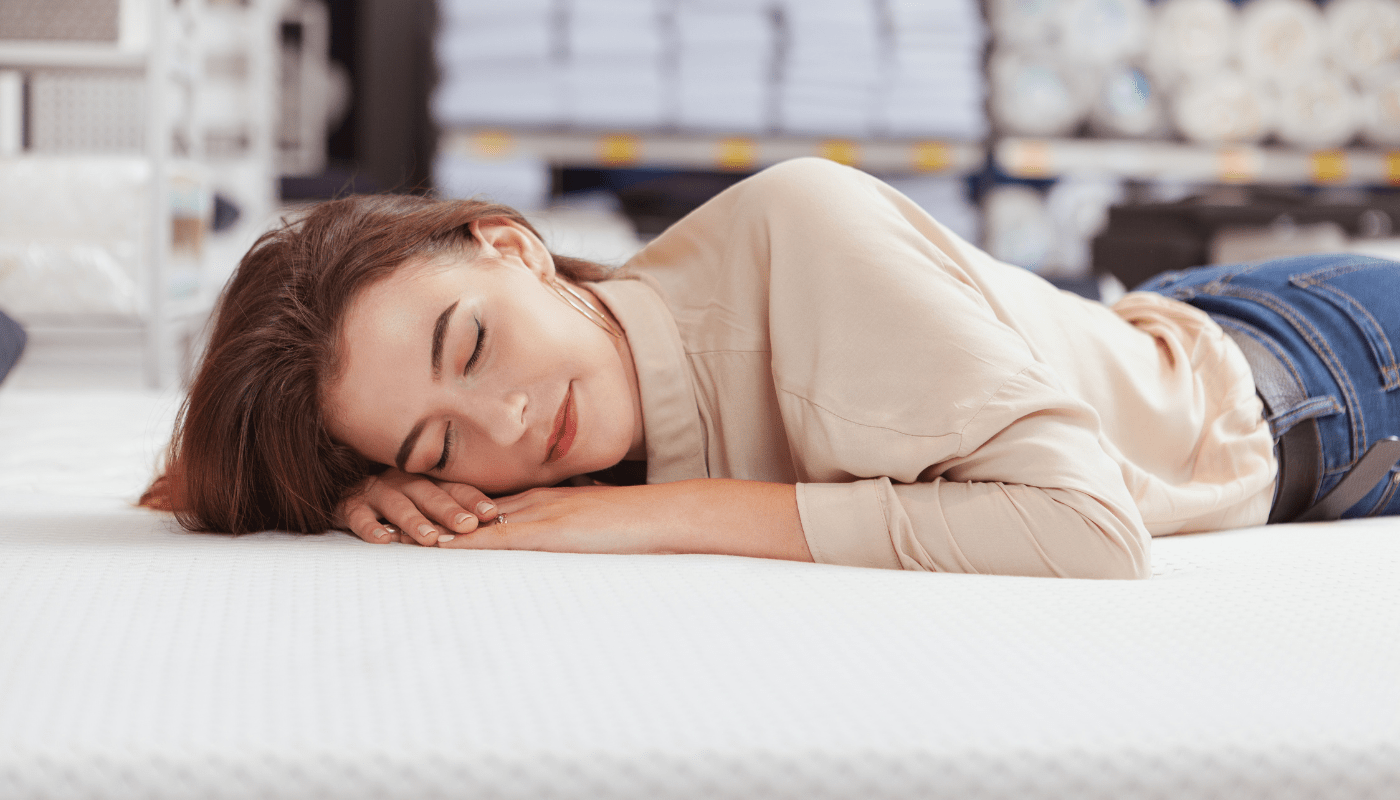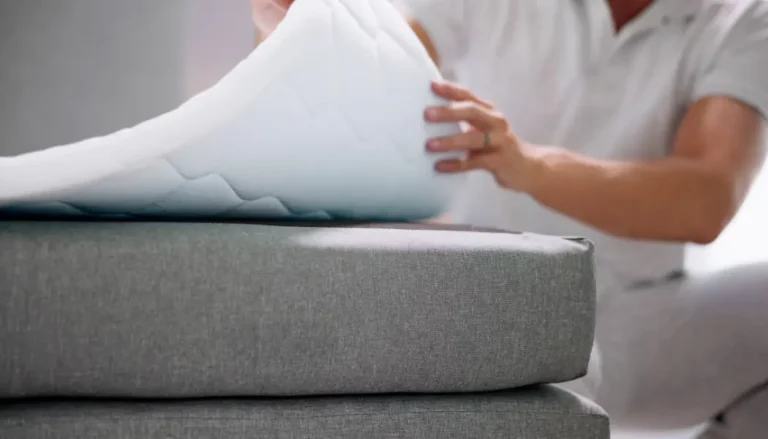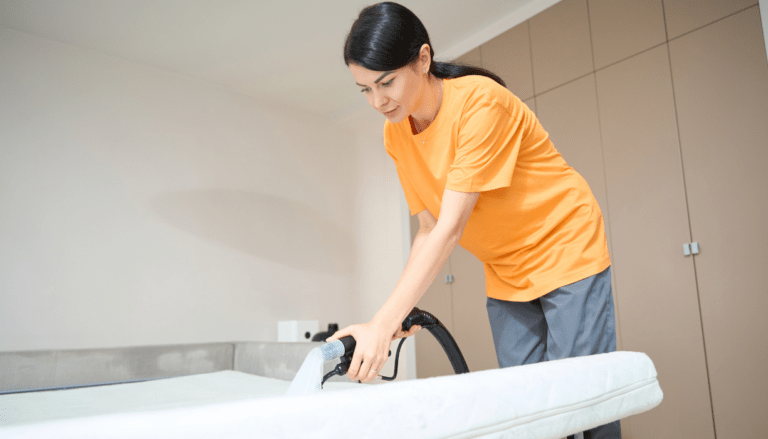Contrary to popular belief, allowing your mattress to air dry on its own isn’t always the most effective or quickest solution. A wet mattress can become a serious problem if not addressed properly and promptly. Are you wondering how to dry a mattress effectively? You’re in the right place!
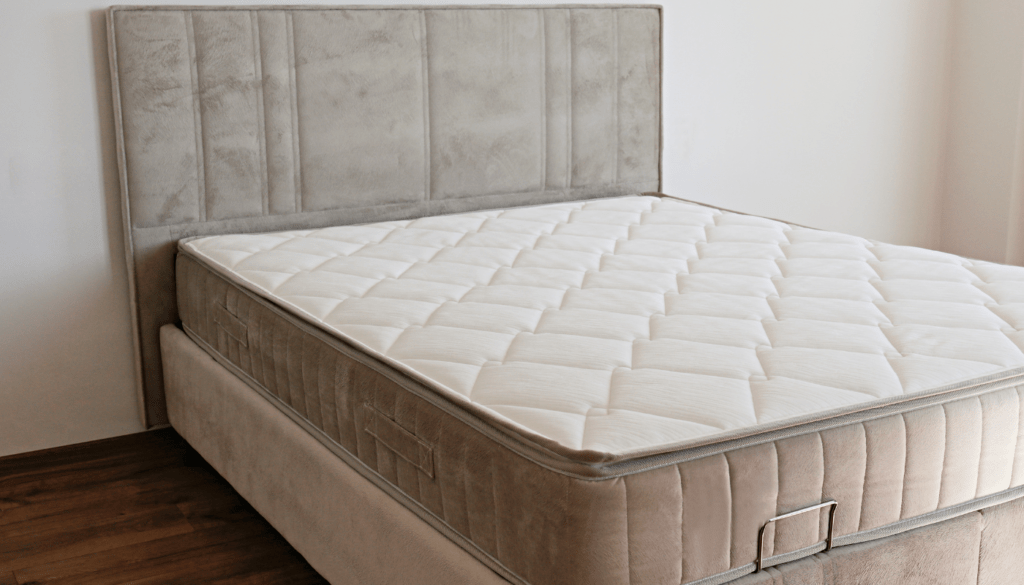
We’ve all been there – a spill, a pet accident, or even a leak that leaves your mattress damp and uncomfortable. In this guide, we’ll walk you through why drying your mattress quickly is so important and give you some expert tips to ensure you get it dry without any hassle. Knowing how do you dry a mattress efficiently can prevent mold growth, and unpleasant odors, and prolong the life of your mattress.
Why You Need to Dry Your Mattress Quickly
So, why is it so crucial to dry a wet mattress right away? Let’s dive into it.
Health Risks
First off, a damp mattress is a breeding ground for mold and mildew. These nasty fungi thrive in moist environments and can lead to serious health issues, including respiratory problems and allergies. You don’t want mold spores floating around in your bedroom!
Besides mold, dust mites love damp conditions too. These tiny creatures can trigger allergies and asthma, making your nights uncomfortable and restless. Drying your mattress promptly helps keep these unwanted guests at bay.
Damage to the Mattress
Leaving your mattress wet for too long can cause permanent damage. The fabric and foam can deteriorate, reducing the lifespan of your mattress. A damaged mattress not only compromises your comfort but also means you’ll have to shell out money for a new one sooner than you’d like.
Moisture can also lead to unpleasant odors. Nobody wants to sleep on a smelly mattress, right? By drying it quickly, you prevent the build-up of bad smells and keep your bed fresh.
The Importance of Quick Action
Acting fast is key. The longer you wait, the more difficult it becomes to fully dry the mattress and avoid the problems mentioned above. Time is of the essence when it comes to keeping your mattress in top condition.
So, the next time you find yourself with a wet mattress, remember the health risks, potential damage, and unpleasant odors that can arise from not drying it promptly. Now that you understand why it’s so important, let’s move on to preparing your mattress for drying and the best techniques to get the job done quickly and efficiently. Stay tuned for some genius ways to dry a mattress fast!
Preparing Your Mattress for Drying
Some people think you can just leave your mattress alone and it’ll eventually dry out. But if you spill water on your bed and want to avoid health risks and potential damage, you need to act fast and prepare your mattress properly. Here’s how to get started.
Immediate Steps to Take to Dry a Mattress
First things first, as soon as you discover your mattress is wet, remove all bedding immediately. Sheets, blankets, and mattress protectors need to be washed and dried separately to avoid any lingering moisture. When dealing with how to clean sweat and pee smells from your mattress, it’s crucial to act swiftly to prevent stains and odors from setting in.
Next, assess the extent of the wetness. Is it a small spill or has the entire mattress been soaked? This will help you decide the best drying method to use. For minor spills, you might just need towels and a fan, but larger areas might require more intensive measures.
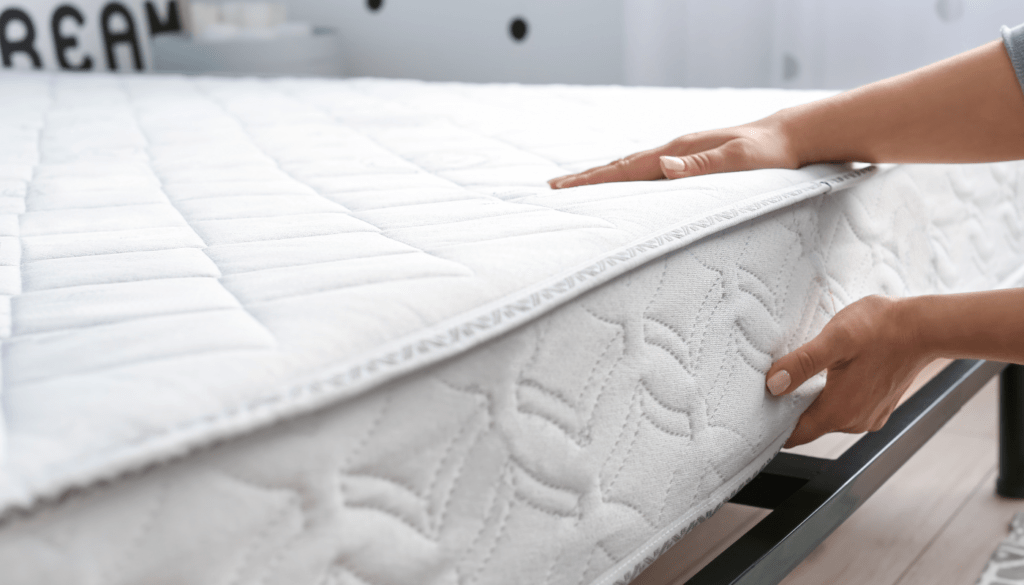
Gather Your Tools and Materials
To dry a mattress effectively, you’ll need a few key items:
- Clean, absorbent towels
- A fan or two for airflow
- A wet/dry vacuum (if you have one)
- Baking soda for moisture and odor absorption
Having these tools ready will make the drying process much smoother and quicker.
Steps to Dry a Mattress Quickly
Now, let’s talk about the specific steps to get that mattress dry:
Blot the Moisture
Use your clean towels to blot and absorb as much moisture as possible. Don’t rub, as this can push the moisture deeper into the mattress. Instead, press down firmly and let the towels do the work. Repeat this process with dry towels until no more moisture is being absorbed. This step is crucial in preventing mold growth.
Use a Wet/Dry Vacuum
If the mattress is significantly wet, use a wet/dry vacuum to suck out as much moisture as you can. Move slowly and make sure you cover the entire wet area. Be thorough and patient, as this device can remove a substantial amount of water. This will also help reduce the drying time significantly.
Apply Baking Soda
Sprinkle a generous amount of baking soda over the wet areas. Baking soda helps to absorb both moisture and odors. Leave it on for at least a few hours, or even overnight if possible. For best results, lightly rub the baking soda into the fabric to ensure it reaches deeper moisture. Vacuum up the baking soda thoroughly once it has done its job.
Enhance Airflow
Set up fans around the mattress to increase airflow. If possible, place the mattress near an open window or in a well-ventilated room. The more air circulation, the faster your mattress will dry. For an added boost, use a dehumidifier in the room to remove excess moisture from the air. This will help expedite the drying process even further.
Monitor and Repeat
Check the mattress regularly. You may need to repeat some of these steps to ensure it’s completely dry.
A mattress protector is your mattress’s first line of defense against spills, stains, and everyday wear and tear. It acts as a barrier, preventing liquids, dust mites, and allergens from penetrating into the mattress fabric. Investing in a quality mattress protector not only prolongs the life of your mattress but also ensures a cleaner and more hygienic sleep environment for you and your family.
Genius Ways to Dry a Wet Mattress Fast
Now that your mattress is prepped, let’s dive into the five genius ways to dry it quickly. Each method has its benefits, so you can choose the one that best fits your situation.
Using Towels to Absorb Moisture
One of the simplest methods is using towels to absorb moisture. Here’s how to do it right:
Blot, Don’t Rub
Use clean, dry towels to blot the wet areas. Press down firmly to absorb the moisture. Avoid rubbing, as this can push the water deeper into the mattress fibers. Make sure to cover the entire wet area thoroughly for the best results.
Layer Towels
For heavily soaked spots, you might need to use several layers of towels. Keep changing them out as they become saturated. This will ensure that you are consistently removing moisture and not just redistributing it. Remember to check underneath the mattress for any hidden damp areas.
Walk on It
If it’s safe to do so, stand on the towels to apply more pressure and absorb more moisture. This method is particularly effective for larger, more saturated areas. Be cautious and distribute your weight evenly to avoid damaging the mattress. You can also use a rolling pin to apply even pressure.
Using towels is great for minor spills and can significantly speed up the drying process when combined with other methods.
Utilizing Fans and Airflow
Fans are your best friends when it comes to drying a mattress:
Set Up Multiple Fans
Place fans around the mattress to increase airflow. If you have a ceiling fan, turn it on as well. Position the fans at different angles to ensure that air is circulating over and under the mattress. This will help dry it evenly and more quickly.
Use High Settings
Set your fans to the highest setting to maximize airflow. High-speed settings are more effective in pushing out the moist air trapped in the mattress fibers. You can also use a combination of oscillating and stationary fans for broader coverage.
Create Cross Ventilation
Open windows and doors to create a cross breeze. This will help move the moist air out and bring fresh, dry air in. If possible, place a fan in the window facing outward to expel humid air from the room. This technique will significantly speed up the drying process by reducing indoor humidity.
Fans are especially effective in well-ventilated rooms and can drastically reduce drying time.
Applying a Wet/Dry Vacuum
A wet/dry vacuum can be a lifesaver for heavily soaked mattresses:
Vacuum Slowly
Move the vacuum slowly over the wet areas to ensure you’re sucking up as much moisture as possible. A slow, steady pace allows the vacuum to extract deeper moisture effectively. Pay extra attention to heavily soaked areas, and make multiple passes to ensure thorough extraction.
Cover All Wet Spots
Make sure to go over every wet spot multiple times. Overlapping your passes can help ensure no areas are missed. Focus on seams and crevices where moisture can hide, as these spots are prone to mold growth if left damp.
Empty the Vacuum Frequently
To maintain suction power, empty the vacuum tank frequently. A full tank reduces the vacuum’s efficiency, making it less effective at removing moisture. Clean the filters regularly to ensure maximum performance, and follow the manufacturer’s maintenance guidelines for optimal results.
This method is powerful and can remove a lot of moisture quickly, making it a great option for larger spills.
Using Baking Soda to Absorb Moisture and Odors
Baking soda is a fantastic natural absorbent and deodorizer:
Sprinkle Generously
Cover the wet areas with a thick layer of baking soda. Make sure to sprinkle it evenly to ensure all damp spots are covered. The baking soda will start to absorb moisture and neutralize any odors right away, making it a key step in the drying process.
Let It Sit
Leave the baking soda on the mattress for several hours or overnight to absorb moisture and odors. The longer it sits, the more effective it will be in drawing out moisture. For particularly wet areas, consider gently working the baking soda into the fabric with your fingers to enhance absorption.
Vacuum It Up
Use a vacuum to remove the baking soda. You might need to repeat this process if the mattress is still damp. Ensure that you use a vacuum with a clean filter to maintain strong suction. Check for any remaining moisture and reapply baking soda if necessary, repeating until the mattress is completely dry.
This method not only helps dry the mattress but also leaves it smelling fresh.
Sun-Drying Your Mattress
If the weather is nice, sun-drying can be an excellent option:
Take It Outside
Move your mattress to a sunny spot outside. Sunlight not only helps dry the mattress faster but also has natural disinfecting properties. Choose a well-ventilated area and use a tarp or plastic sheet underneath to protect it from ground moisture and dirt.
Flip It
Make sure to flip the mattress occasionally to ensure both sides get dried. Rotate it every few hours to expose all surfaces to the sun and air. This will help prevent any residual moisture from being trapped inside the mattress.
Check for Dampness
Bring the mattress back inside only when it’s completely dry. Feel for any damp spots by pressing down on different areas. Ensure there are no lingering moisture or odors, as even a slightly damp mattress can lead to mold and mildew growth over time.
Sun-drying not only dries the mattress but also uses UV rays to kill bacteria and germs, making it a double win.
By following these methods, you can ensure your mattress is dried quickly and effectively. Remember, the sooner you start the drying process, the better. Happy drying!
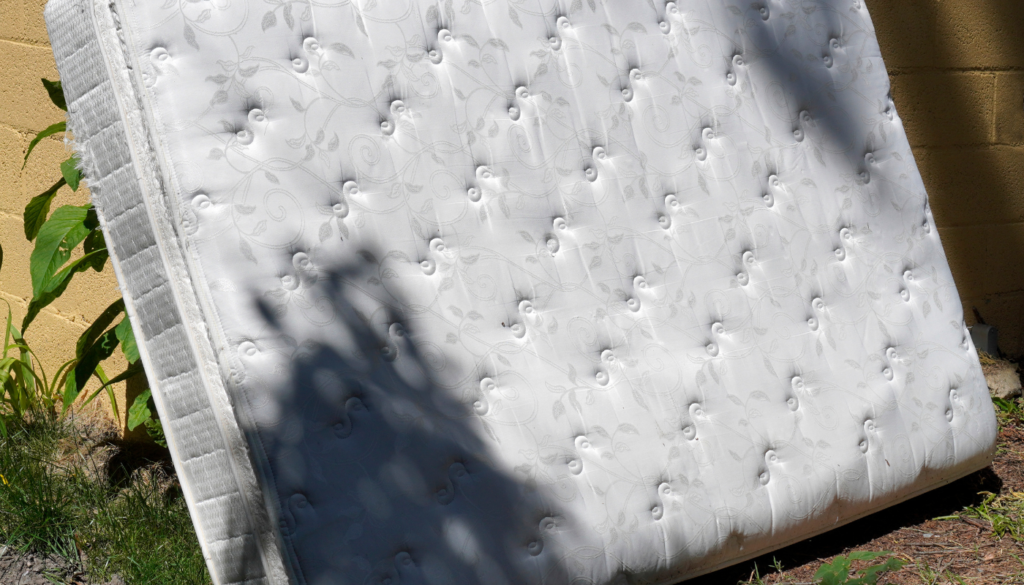
Extra Tips for Keeping Your Mattress Dry
Many people think that once their mattress is dry, they’re done and can forget about it. However, taking some extra steps to keep your mattress dry can save you a lot of hassle in the future. Let’s dive into some smart tips to ensure your mattress stays dry and fresh.
Regular Mattress Maintenance and Protection
Maintaining your mattress is key to preventing moisture problems:
Use a Mattress Protector
A waterproof mattress protector is a must-have. It acts as a barrier against spills, sweat, and other liquids. Look for one that’s breathable to avoid trapping heat. A good protector can extend the life of your mattress by preventing stains and reducing the risk of odors and bacteria growth.
Rotate Your Mattress
Rotate your mattress every few months to ensure even wear and tear. This also helps in preventing moisture buildup in one spot. Flipping and rotating your mattress regularly can improve comfort and support, maintaining its quality and extending its lifespan.
Clean Regularly
Vacuum your mattress every few weeks to remove dust and allergens. For deeper cleaning, use baking soda and let it sit for a few hours before vacuuming it off. Regular cleaning helps keep your mattress fresh and hygienic, reducing the risk of allergens and maintaining a healthy sleep environment.
Using these maintenance tips will not only keep your mattress dry but also extend its lifespan.
Keeping Your Bedroom Ventilated
A well-ventilated room can significantly reduce the chances of your mattress getting damp:
Use a Dehumidifier
If you live in a humid area, a dehumidifier can help keep the air dry. This reduces the moisture that your mattress absorbs. By maintaining a low humidity level in your room, you can prevent excess moisture from settling into the mattress and avoid potential mold growth.
Open Windows
Whenever the weather allows, open your windows to let fresh air circulate. Cross-ventilation can help keep both your room and mattress dry. Fresh air helps remove humid air and promotes faster drying of your mattress, contributing to a healthier sleeping environment.
Ceiling Fans
Use ceiling fans to promote air circulation. This helps in reducing humidity levels inside your room. Ceiling fans not only improve airflow but also distribute air more evenly, aiding in the drying process and making your room feel cooler and more comfortable.
Handling Spills Immediately
Accidents happen, but handling spills quickly can prevent long-term damage:
Blot Spills Right Away
Use towels to blot and absorb as much liquid as possible immediately after a spill. The faster you act, the less moisture will be absorbed into the mattress, reducing the risk of stains and odors.
Apply Baking Soda
Sprinkle baking soda on the wet area to absorb remaining moisture and eliminate odors. Baking soda helps neutralize odors and draws out any lingering dampness from the mattress.
Dry with Fans
Use fans to dry the area completely. Ensure the mattress is fully dry before putting the sheet back on. Proper drying helps prevent mold and mildew growth, keeping your mattress in good condition.
By incorporating these extra tips into your routine, you can maintain a dry and comfortable mattress, ensuring you always have a great night’s sleep.
Frequently Asked Questions (FAQs)
There are plenty of questions that come up when dealing with a wet mattress. Let’s address some of the most common ones to help you out.
How Long Does It Take for a Mattress to Dry Completely?
The drying time for a mattress can vary based on the extent of the wetness and the drying methods used. Generally, it can take anywhere from a few hours to a couple of days. Using tools like fans, dehumidifiers, and wet/dry vacuums can speed up the process significantly.
Can a Hairdryer Be Used to Dry a Mattress?
While you can use a hairdryer for small spots, it’s not recommended for larger areas. Hairdryers don’t provide the consistent airflow needed for thorough drying and can sometimes push the moisture deeper into the mattress. Stick to fans and dehumidifiers for better results.
What Should You Avoid When Drying a Mattress?
Here are a few things to avoid:
Direct Heat
Avoid using direct heat sources like space heaters. These can damage the mattress materials. High temperatures can warp or weaken the mattress structure and affect its comfort and support. Instead, rely on natural airflow and fans to aid the drying process safely.
Rubbing
Don’t rub the wet areas, as this can push moisture deeper and damage the fabric. Rubbing can also distort the mattress’s surface and affect its overall feel. Instead, use blotting techniques and gentle pressing to absorb moisture without causing damage.
Ignoring Moisture
Never ignore a wet mattress, as prolonged moisture can lead to mold, mildew, and unpleasant odors. Damp conditions create an ideal environment for fungal growth, which can impact your health and reduce the mattress’s lifespan. Address any moisture issues promptly to maintain a clean and healthy sleeping environment.
By addressing these FAQs, we hope to have cleared up some common concerns and provided you with actionable advice on drying and maintaining your mattress. Keeping these tips in mind will help ensure your mattress stays dry and comfortable, offering you a good night’s sleep every night.
Conclusion
Many people believe that drying a mattress is a one-time fix, but that’s not the case. Keeping your mattress dry and well-maintained is an ongoing effort that pays off in the long run. Now that you know how to handle a wet mattress and prevent future issues, let’s wrap up with a quick recap and some final thoughts.
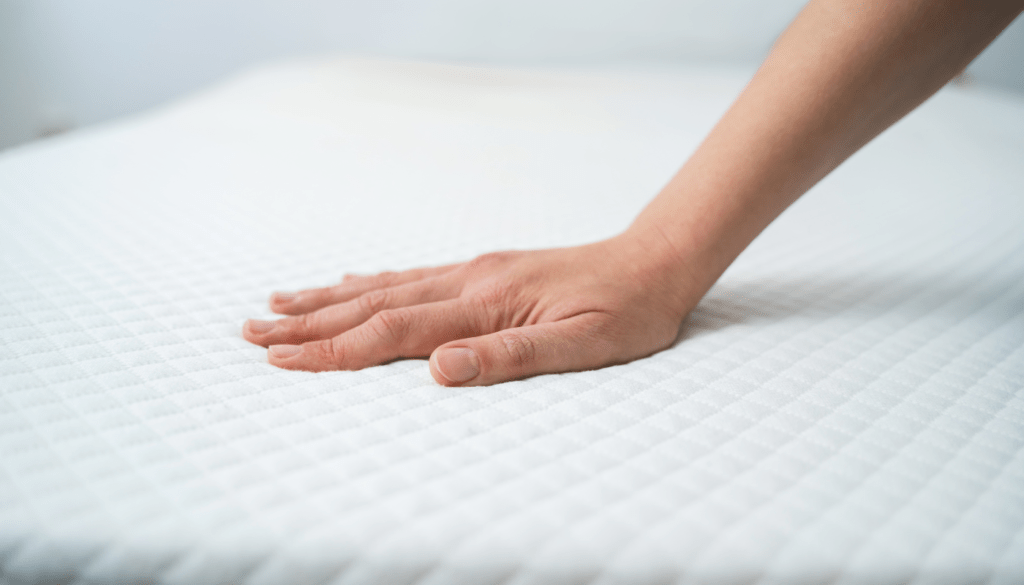
We’d love to hear from you! Have you ever had to deal with a wet mattress? What methods worked best for you? Share your experiences and tips in the comments below. Your insights could help others facing the same issue.
If you found this guide helpful, be sure to check out our other articles on mattress care and maintenance. From cleaning tips to choosing the right mattress protector, we’ve got you covered. Subscribe to our newsletter for more expert advice and stay updated on the latest tips to keep your home comfortable and cozy.
By following these guidelines, you’ll not only ensure your mattress remains dry and fresh, but you’ll also extend its lifespan, ensuring many nights of restful sleep. Thanks for reading, and happy drying!
